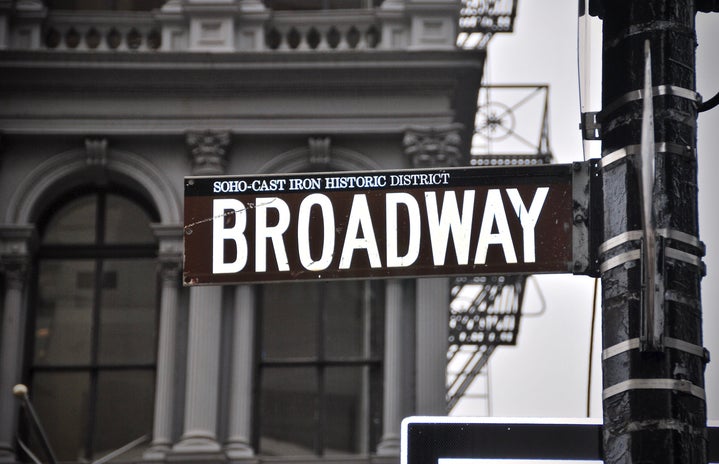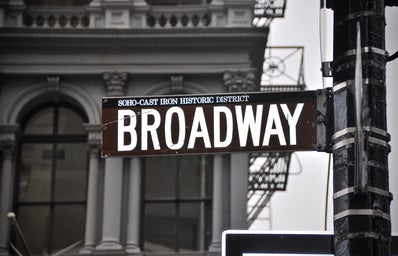There’s no question that COVID–19 has enormously impacted the arts. Across the spectrum of creative and artistic endeavors, from film and television to gallery exhibitions and live performances, the arts sector has taken a devastating hit. With changes in consumer behavior, severe unemployment, and restrictions on gatherings, workers in the arts industry have been particularly vulnerable to the pandemic’s significant economic impacts. However, nowhere in the entire arts sector have these effects been more direct than in the performing arts.
I still remember the moment I heard that Broadway shut down on March 12th, 2020. As someone who lives relatively close to New York City, I’ve been fortunate enough to attend various Broadway shows over the years with family and friends. To me, musical theatre has always been a source of comfort, inspiration, and joy, and there’s no feeling better than watching a show unfold live in front of you. When I found out that live performances were shutting down, my heart sank — not only because it signaled that the world was definitely changing for a significant amount of time, but also because I knew the negative impacts on the arts industry (and on the lives of the artists who bring it to life) would be monumental.
Before the 2020 shutdown, Broadway supported 96,900 local jobs and contributed an annual $14.7 billion to New York City’s economy. Performances resumed at full capacity on September 14th, 2021 after 15 months of being shuttered by the pandemic, but the working lives of performers, design teams, and stage crews have been fundamentally disrupted.
This November, my professor for my first–year seminar “Why College: Historical and Contemporary Perspectives” took our class to New York City to see Jagged Little Pill, a Broadway musical inspired by Alanis Morrisette’s 1995 rock album of the same name. The seminar examines the development of undergraduate education in America from its inception to the present. One of the key themes in the course is sexual violence, one of the most serious student–life issues on campuses today. The show conducts an authentic dialogue about the topic while simultaneously exploring how students today can think and act differently regarding sexual violence.
I had listened to both Alanis Morrisette’s album and the cast album before Broadway originally shut down as I was hoping to see this show since it opened in 2019. Seeing Jagged Little Pill was also my musical–loving self’s first time back at a live performance since the pandemic began.
To put it lightly, this show was musically awe–striking and took my breath away. Jagged Little Pill is a theatrical masterpiece: it weaves each song from Morrisette’s unapologetically honest and jarring, yet hopeful album into an exhilarating plot about relationships, living, and learning. At the same time, however, it raises conversations around controversial and sensitive issues, such as drug abuse, climate change, and White privilege, in a way that reaches out and touches the audience.
The show centers around a picture–perfect family, the Healys, living in a suburban town. On the outside, the Healy family seems to have everything figured out. However, through a mysterious yet revolutionary plotline, Jagged Little Pill reveals that, at its core, nothing is as it seems and that there’s a different side to every story.
Attending this performance of Jagged Little Pill with my class reminded me of just how magical live theatre is — it’s the art of taking a story and projecting it to an audience so that they can relate, understand, and derive meaning from the experience.
Live theatre, just like other forms of art, is transformative. The different elements of music, costumes, lighting, acting, sets, and choreography all combine to create an experience that’s engrossing and immerses you in the story right away. In a world where there is so much chaos, Broadway shows (and all other live theatre performances!) offer an escape and a satisfying emotional outlet through which our struggles can be musically illuminated. Broadway shows are undeniably a whirlwind of creativity, collaboration, and self–expression, and I’m incredibly thankful to be back in the room where it all happens.

